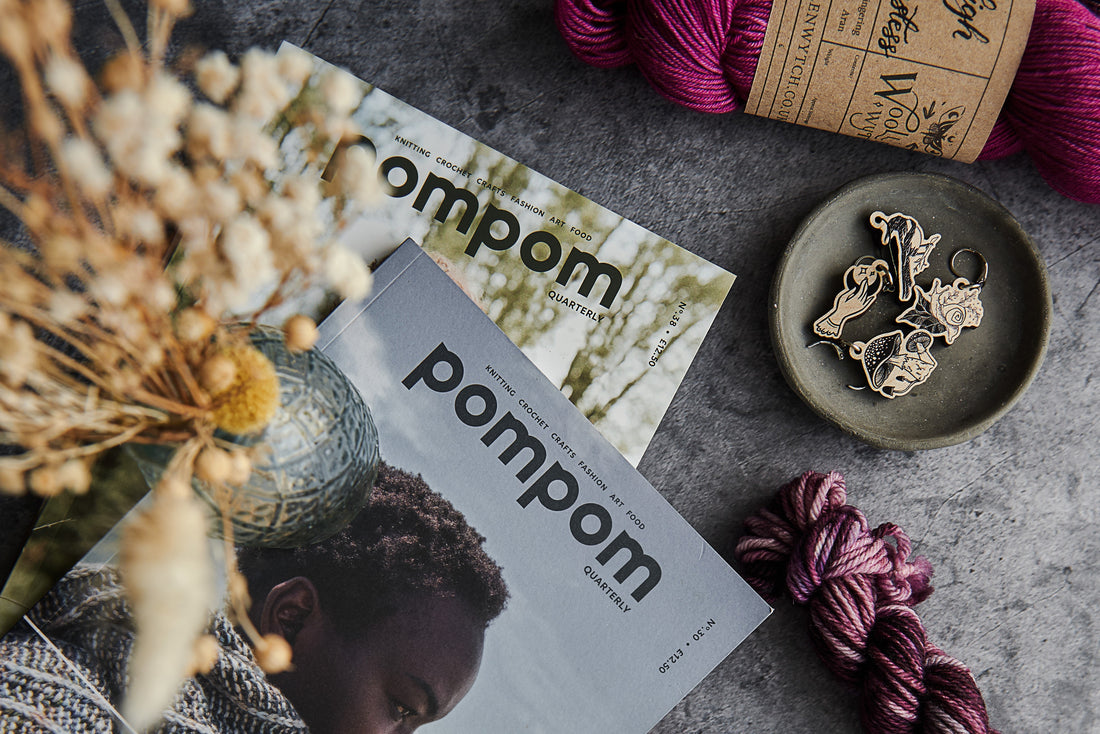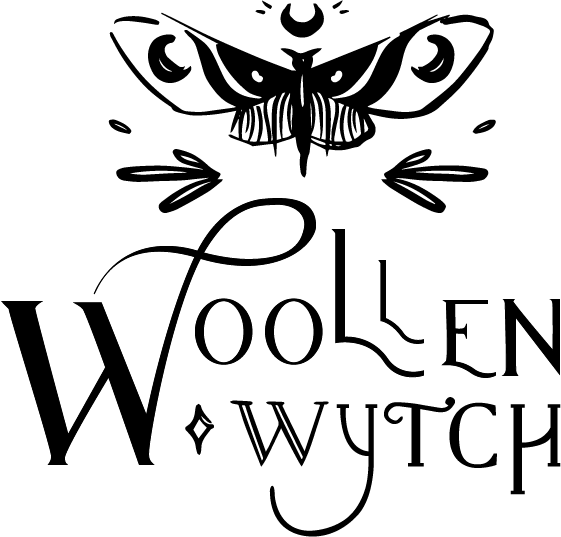
Get Knitting: Must have Knitting Tools for Beginners
Share
So you want to start knitting but you don't know where to begin or what you need in your project bag, well you've come to the right place. I've compiled a little list of tools for knitting that I find handy to keep with me. One thing I will add though, try to buy quality over quantity. We all start out looking for a bargain, but I've found I almost always regret it and end up buying things more than once until I get it right.
Knitting Needles
Most will start with straight wooden needles, but that might not necessarily be the best place to start. More & more popular patterns are being written 'in the round' for use on circular needles, so you may find these a better place to start. And you can always go back and knit 'flat' patterns using circular needles without the need for straight needles.
My personal favourite go-to needles are Chiaogoo Red lace circular needles, it's why they're the only brand I stock at Woollen Wytch. I've found them to be a godsend with circular knitting, they're comfortable, quick and don't snag. If you're able to treat yourself to the Interchangeable set you don't need to buy countless needles or countless cables separately (They even come in a cute little case).

Ruler
A Ruler or Tape measure is a definite Must-have for all knitters. If your looking to knit garments & accessories, you'll need to measure yourself before you even pick up your yarn & needles. Also whilst some patterns will tell you how many rows to knit, others will say to 'knit until Xcm long'. I find the flexible Tailor's style tape measure the best for my project bag, Prym even sell them with a Popper closure so it wont unravel.
Knitting Needle Gauge
If, like me, you may have inherited a whole bunch of needles from family members, and almost all of them are missing labels and are unknown mystery sizes (or you may have just forgotten to wear your glasses and can't read the tiny numbers on your needle) Either way, a needle gauge is a great little addition to your knitting bag so you can quickly deduce what needle your working with or figure out what those rogue needles are. I make a few wooden knitting needle gauges, but my favourite has to be the All in One Gauge which has a WPI tool, Swatch Gauge and a Knitting needle gauge all rolled into one handy knitting tool.

Stitch markers
Stitch-markers are a must-have for any project bag and knitter. Some people like to use 'waste' yarn, but I like to decorate mine with pretty coordinating stitch markers. Mark where you are within your projects with ease, using stitchmarkers at the beginning or end of a round when circular knitting. Stitch markers also come in really handy for marking pattern repeats, increase and decrease points. I find using a larger stitch marker, similar to the ones I make, more helpful when marking areas I need to pay close attention t, I tend to knit a lot in front of the TV so waste yarn tends to get skipped or missed if I'm not careful.

Yarn
Yeah, okay, this goes without saying really, but if you're buying and building a little knitting kit for a friend you might just overlook the whole yarn part and get too excited by the tools. I might be personally biased but you really can't go wrong with hand dyed yarn when creating beautiful personal one of a kind knitting projects.

Knitting Patterns & Books
Unless your just knitting very simple scarves or blankets you'll probably be following a knitting pattern, so you definitely need it in your bag. You can download a lot of patterns from Ravelry and Other websites straight to your phone, but I really don't think you can beat a hard copy- especially if you can write and add notes all over them.
If you're new to knitting and looking for some beginner knitting books I highly recommend Pom Pom's Knit How & Ready Set Raglan books. Knit How takes you through all the common techniques you'll need in knitting, teaching you through easy projects such as scarves, mittens and hats (there's even a few sweater and sock patterns to try. If you're looking to take the leap from basic knitting to knitting yourself a jumper, Ready Set Raglan is great for slightly more experienced but still beginner knitters.


Row Counter or Notepad & Pen (Both?)
Whilst you're knitting you'll really want to keep track of where you are in the pattern so a Row Counter is perfect, however a notepad and pen works just as well. Jot down some notes, scribble any mistakes or alterations your making, hell, keep a tally of the rows you've knitted. There's even a built in Tally Counter function on most phones now, I know the one on my Samsung phone is almost always in use when I'm knitting (if I'm not getting distracted by Instagram.)
Tapestry Needle & Snips
I plonked these two together because they are both to do with finishing projects. A little pair of scissors and a tapestry needle is a guaranteed must have for your knitting bag. You'll need them for almost ever project you'll knit. Use them to snip your yarn and weave in those ends, finishing off your hand knits. Your pattern may even require you to seam (sew) pieces together, this is usually on sweater sleeves. Got a random hole or a loose stitch? Sew it up.

Optional Extras for your Knitting bag
As an added little bonus, here's some things to think about adding to your knitting kit as you go through your knitting journey but aren't necessary.
Blocking Mats & Pins
To block or not to block that is the question. Blocking Knitwear is the process of wetting or steaming your finished garments to set the finished size and evening out the stitches. (A garment can grow or shrink after blocking so always make sure you gauge swatch and block a sample first.) You can use any flat surface to block, but I recommend foam mats and blocking pins to help set your garment. Many people don't bother to block their knitwear, but I love a good blocked knit. It always feels more finished after blocking and knitted lacework always looks it's best after blocking. If you've gone to the effort of hand knitting something you want it to look it's best surely?
Yarn Swift & Winder
This is especially useful if you buy your yarn in skeins rather than balls.
Pre-wound balls of yarn are generally more commercially available in your larger craft supply stores rather than skeins, and there's nothing you need to do with them, simple find the end and start knitting. However most indie dyed yarn is only available as Skeins or hanks and they require a little more preparation before you can get to the knitting. The likelihood is, if you've made it onto this blog, you're probably more interested in knitting with hand dyed yarn than with commercial budget yarn, so if that's the case then you'll eventually want to add a Swift and Ball Winder to your knitting wishlist.
A swift is used to hold a hank of yarn, and rotates in place as you wind your yarn into a ball. You don't necessarily need one, you can always loop the yarn around your knees or get a friend to hold their arms out, however winding becomes a lot easier with a swift. Ball Winders help you make perfect yarn 'cakes' also known as centre-pull balls. Out of the two, a swift would probably be a good first purchase if you can stretch to buying one, you can always wind a ball by hand without the winder, but life becomes much more comfortable with a swift.

Found this helpful? Share it on Pinterest!


